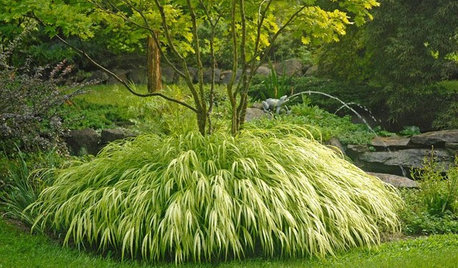My head is spinning at the moment and I could really use some advice on this.
I have an Acer Palmatum (it is supposed to be a Pine Bark Maple, but I suspect it was mislabeled.) It has been a very vigorous healthy tree and is maybe about 7 years old. This spring it has been leafing out and looked healthy, except two entire large branches did not leaf at all. I scraped the bark of these branches in various spots and it some spots there was green in others dead brown, scattered all around the large areas. One of the main branches (about 2.5" diameter) had some darkness on the outside which concerned me anyway. So I felt I should get to work removing these two main branches of the tree as it seemed some sort of dieback disease was actively happening.
Today I removed the two branches. Both have dark semi circles within the cambium to varying degrees and patterns throughout. And on closer inspection I could see that in some places the outsides of the bark were very dark almost black, especially at places where the trunk or limbs branch.
I cut the two branches back to the main trunk but even at that point I can still see a thin circle of dark within the wood rings. (So I can see I have not cut all the way back to healthy tissue.)
I feared virticillium wilt, googled, and immediately all the pictures I see are what I am seeing in my tree. (What I don't see in my tree is any wilt, just about three totally healthy looking branches with leaves and two completely dead looking branches with no leaves.
I am crushed. I know this is a serious disease and know a fair amount about it. What I need help with is what to do next and what the future may hold.
I cut out various samples of the wood and took a soil sample and I have those ready if I need to send them to be tested. Even if it is this obvious that it is Virticillium Wilt (I think?), should I get it tested? I figure it is such a serious disease with such long term implications that I need to have it confirmed? (I have the info on testing.)
As far as I understood I will now need to remove the entire tree and as much root as I can and then can only plant certain species there basically from now on. And I have that list.
If it is going to die over a few years I would rather get a replacement in so it can get established rather than watch this tree die a long slow sad death.
But in googling I am reading about "treatment" of it, and healthy trees being able to withstand it and trees compartmentalizing it. Some things say a healthy maple won't get it and will only get it if stressed (?) But you know how the web is, I am really just finding too much information. I thought this was basically a death sentence for the tree and for and future maples or other susceptible species planted in that soil. And alot of the info I am finding does say that. And yet here is this other information. Which is true?
Assuming that it does mean no susceptible trees can grow in the infected soil, I would like to know how far does this spread in the soil? Can I assume my whole property has it? or just as far as the roots of this tree reached? Or...?
Which leads me to my next dread, I have a beautiful Acer Palmatum "Fireglow" only about 6 or 7 feet away from the diseased tree. I took a sample from it and it's soil and have that prepared to send if necessary. If the first tree has Virt. Wilt is the second tree done for as well?
I had plans to plant another Acer Palmatum about 40' away, and in fact was hoping to have many more on my property. (I have 2 Paperbark Maples Acer Griseum in the front as well.) It's a 50' x 100' lot.
So my main questions are:
1) Should I send a sample to be verified?
2) Should I send a sample of the second tree 6' away
3) The tree is going to have to come out, right? What's the deal with these things that say it can be managed?
4) Or do I leave it and take a "wait and see" approach?
5) If it is Virticillium Wilt how much of my property can I figure is effected?
Sorry this is so lengthy but I hope the details are helpful. And frankly I partly just needed to share this. Like I said I am just crushed to have found this out today. I planted this tree and the fireglow years ago and am so sad to think they may die.
Thanks for any advice and hand-holding anyone might have.










gardengal48 (PNW Z8/9)
Related Professionals
Arlington Landscape Contractors · Pelham Landscape Contractors · Bedford Landscape Contractors · Bridgeport Landscape Contractors · Dallas Landscape Contractors · Fort Payne Landscape Contractors · Lynn Landscape Contractors · Coram Fence Contractors · Hackensack Fence Contractors · Lincolnwood Fence Contractors · Los Angeles Fence Contractors · Parkland Fence Contractors · Rockville Fence Contractors · South Miami Fence Contractors · Cayce Fence Contractors